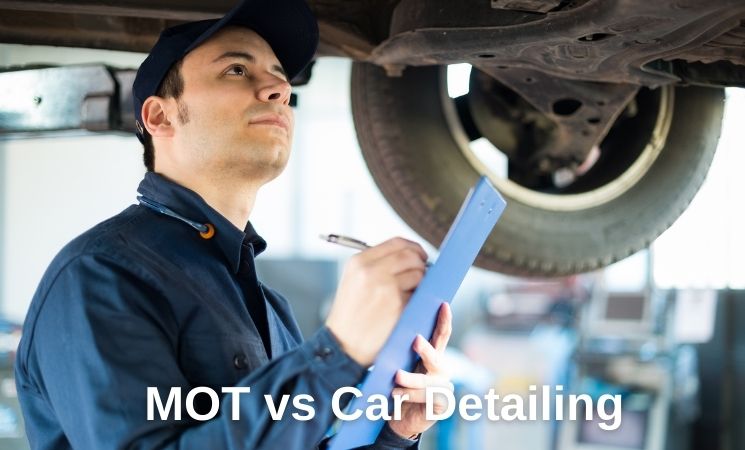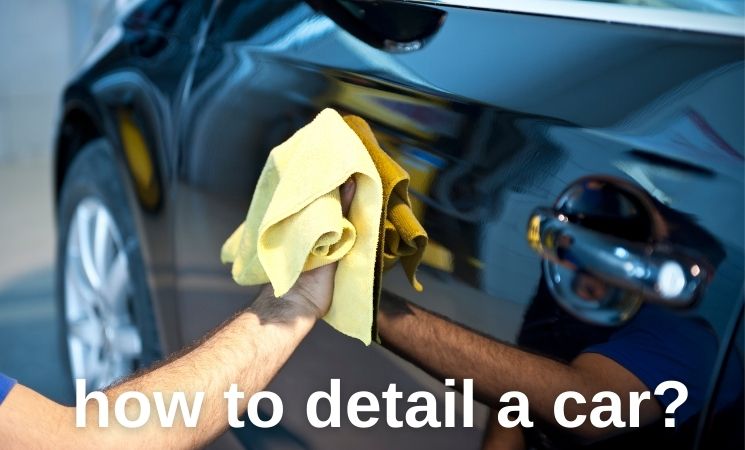When purchasing a used vehicle, checking the MOT history is absolutely essential to identify potential mechanical issues that could affect both the car’s performance and its detailing needs. A comprehensive MOT history check before buying a used car provides crucial insights into the vehicle’s past maintenance and can help buyers avoid expensive problems down the road.
Here is a quick checklist of what an MOT history report reveals:
| Information | Importance |
|---|---|
| Pass/fail status | Indicates if the car passed annual safety tests |
| Mileage at test dates | Verifies odometer readings and detects rollbacks |
| Failure reasons | Highlights recurring issues to watch out for |
| Recalls | Uncovers outstanding safety recalls to address |
| Repairs done | Provides maintenance history for the car |
Checking this vital information will ensure your used car purchase is mechanically sound and ready for professional detailing. Read on to learn more about why MOT history really matters.
The Connection Between MOT History and Car Detailing
Reviewing a used car’s MOT history is a crucial step for both buyers and professional detailers alike. Here’s why it matters:
- A car’s MOT history provides important clues into its overall condition that can impact detailing needs. For example, frequent MOT failures due to rust, damaged lights, or fluid leaks point to underlying issues that may require correction before detailing work can begin.
- Identifying potential problem areas based on past MOT records allows detailers to plan their work accordingly. Structural repairs, replacement parts, or paint touch-ups may be needed first.
- Details like mileage and ownership history from MOT tests help detailers estimate the normal wear and tear to expect on a vehicle. Higher mileage cars may require more intensive detailing.
- Any major MOT failures related to accident damage, flood exposure or odometer tampering could indicate compromised structural integrity. This needs to be addressed before investing in paintwork.
- Overall, a car’s MOT status offers detailers valuable insights into its history and condition, helping them recommend appropriate services. It’s an integral part of comprehensive vehicle care.

Pre-Detailing Checklist: Why MOT History Matters
Before beginning a full detailing service, technicians should always check a car’s MOT history as part of their pre-detailing checklist.
- Reviewing the MOT records helps identify potential issues like rust, corrosion, damaged lights or reflectors that may require repair before detailing can begin.
- Looking for patterns in past MOT failure reasons provides clues into recurring issues to address first.
- Mileage recorded at each MOT test helps verify odometer accuracy and estimate normal wear.
- Major MOT failures related to accident damage, water exposure or structural repairs need to be addressed.
- Cross-checking the MOT status with a vehicle inspection report provides a more complete picture.
- This due diligence helps detailers recommend appropriate services based on the car’s true condition.
Enhancing Vehicle Value with Detailing and MOT Compliance
Together, professional detailing and staying current on MOT requirements can significantly enhance a used vehicle’s value and saleability.
- Comprehensive professional detailing services like paint correction and interior treatments drastically improve the look and feel of a used car.
- Maintaining a valid MOT certificate and addressing any issues demonstrates roadworthiness and safety.
- Minor repairs based on MOT failure reasons can resolve mechanical problems early on.
- Ongoing MOT compliance shows a well-cared for vehicle with preventative maintenance.
- Cosmetic detailing paired with mechanical reliability from regular MOT testing improves resale value.
However, keep in mind MOT checks have limitations. Additional vehicle history checks are recommended for a more complete picture.
Practical Advice on Addressing Common MOT Issues
Here is some guidance on addressing a few typical MOT failures to help buyers evaluate potential repair costs:
- Brake pads wearing thin – Replace pads soon, around £100-£250 for parts and labor.
- Excessive exhaust smoke – Could indicate issues with air filters, spark plugs, or O2 sensors. Budget around £200-£500 for repairs.
- Faulty lights/reflectors – Replace bulbs and fittings, approximately £50-£150 in total.
- Fluid leaks (oil, coolant) – Have seals examined and replaced as needed, estimate £200-£350.
- Tyre defects – New tyres often needed, budget £300-£600 to replace a full set.
- Windscreen chips – Minor chips can be repaired first, otherwise replace windscreen for about £200-£500.
Importance of Consumer Protection
When purchasing a used vehicle, consumer protections like warranties and return policies offer valuable peace of mind. Consider these tips:
- Buy from reputable dealers that offer at least a short warranty on used cars.
- Inspect the MOT history yourself rather than relying on a dealer’s word.
- Test drive the car and have it inspected by a mechanic before purchase.
- Review return policies – some dealers offer a 1-2 week window for returns.
- Pay using a credit card for additional consumer protections if issues arise.
Comprehensive Checklist for Used Car Buyers
Use this checklist when purchasing a used car to make sure you don’t overlook anything important:
- Review the vehicle’s MOT history yourself and look for patterns.
- Cross-check the mileage records from MOT tests for any inconsistencies.
- Look up any past recalls still outstanding for that make and model.
- Have an independent mechanic carry out a thorough inspection.
- Take the car for an extensive test drive on different road surfaces.
- Check all fluid levels, tire treads, brakes, lights etc. yourself.
- Ask the seller detailed questions and request maintenance records.
- Research common problems with that particular make and model.
- Confirm any warranty coverage and return policy.
- Inspect all vehicle identification numbers for signs of tampering.
Following these tips and reviewing the MOT history thoroughly helps ensure your used car purchase is a wise investment.
A used car’s MOT history provides invaluable insights into its mechanical condition and maintenance background. Combining this information with professional detailing creates a vehicle that is both visually appealing and mechanically sound. So for both buyers and detailers, checking the MOT records is an essential first step before investing time and money into a used car. It could help avoid expensive surprises down the road and maximize resale value too. Consider the MOT history a crystal ball that offers a clearer view into your potential used car’s past, present and future.




